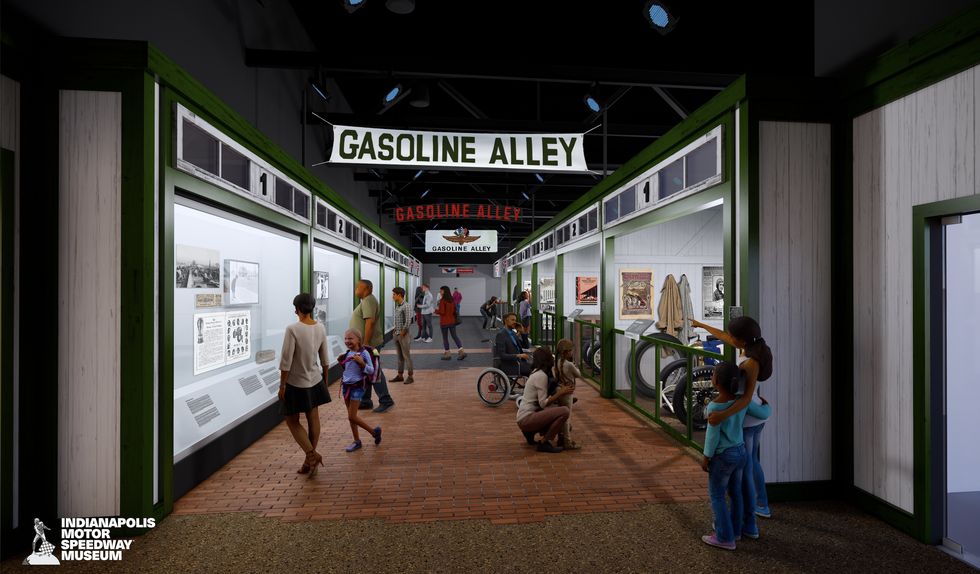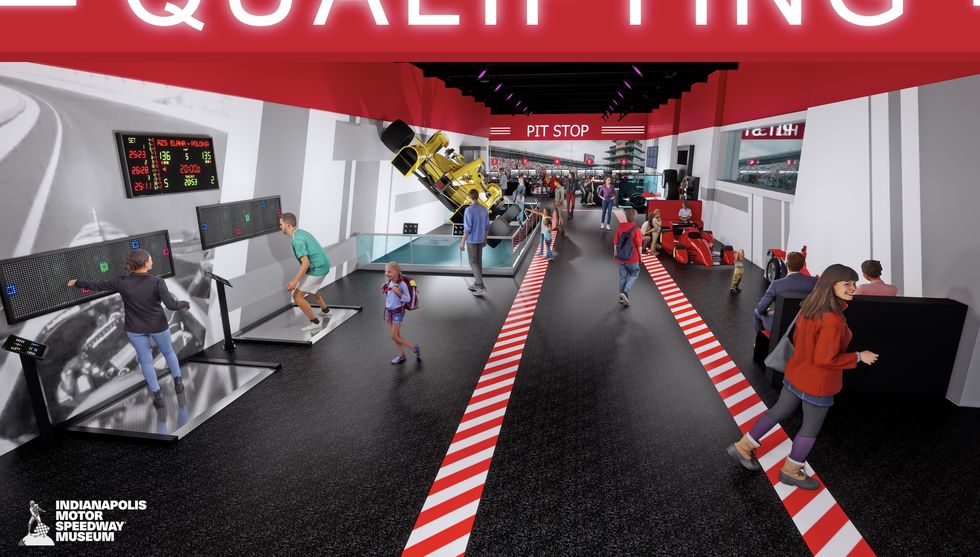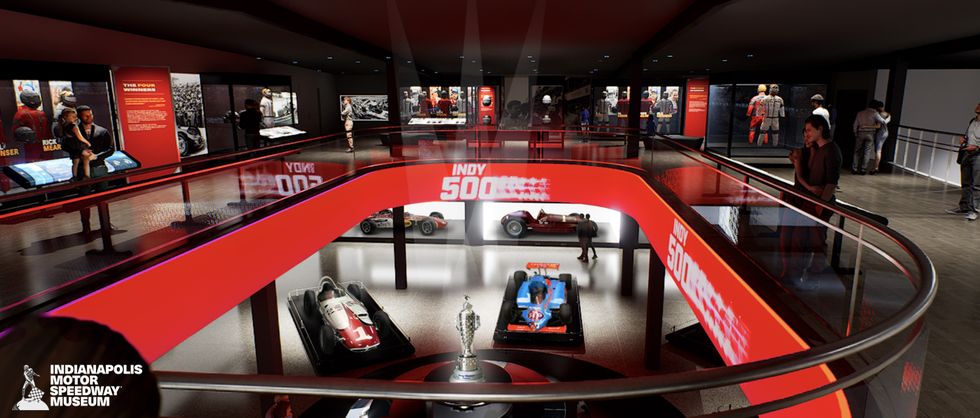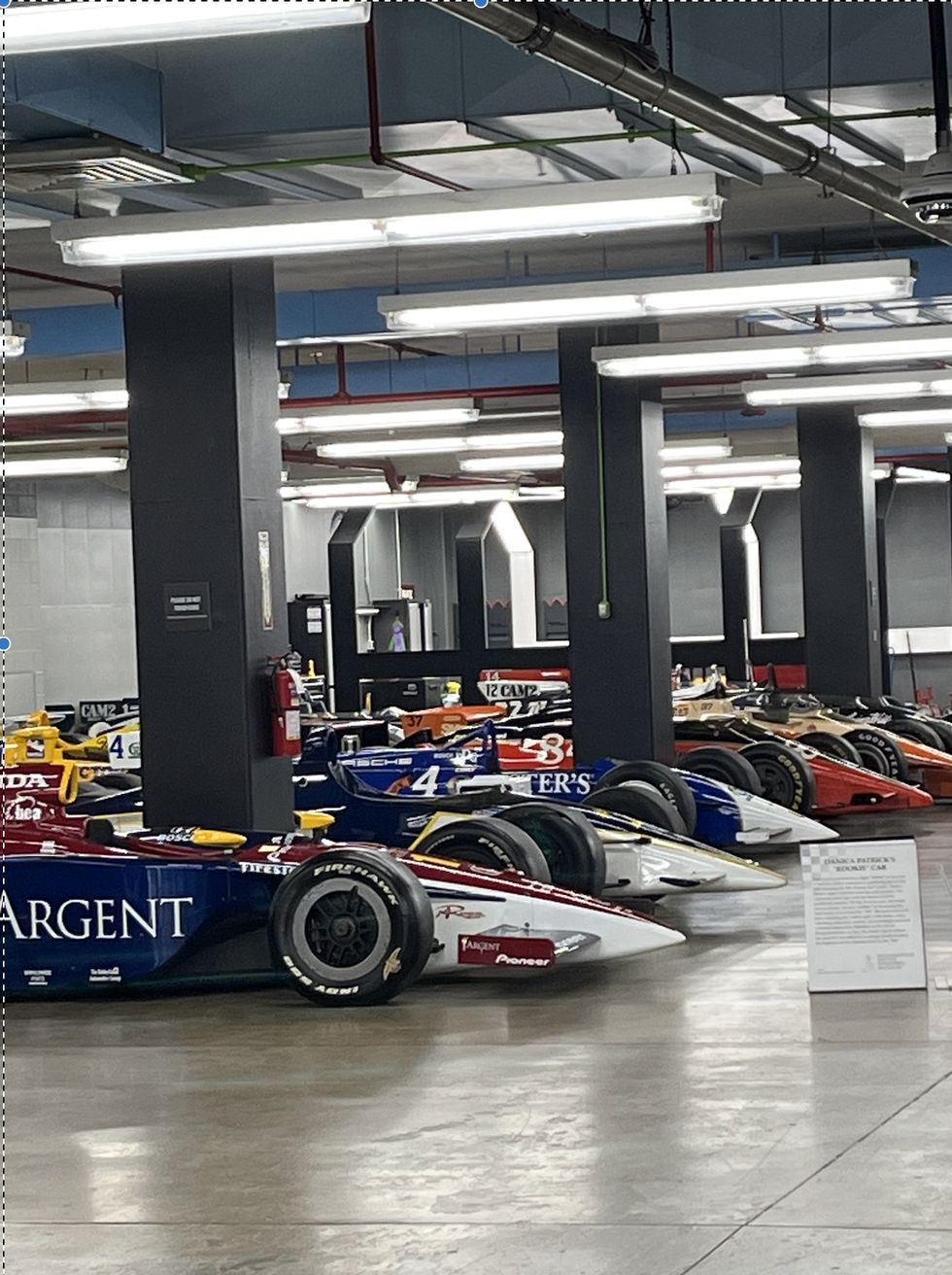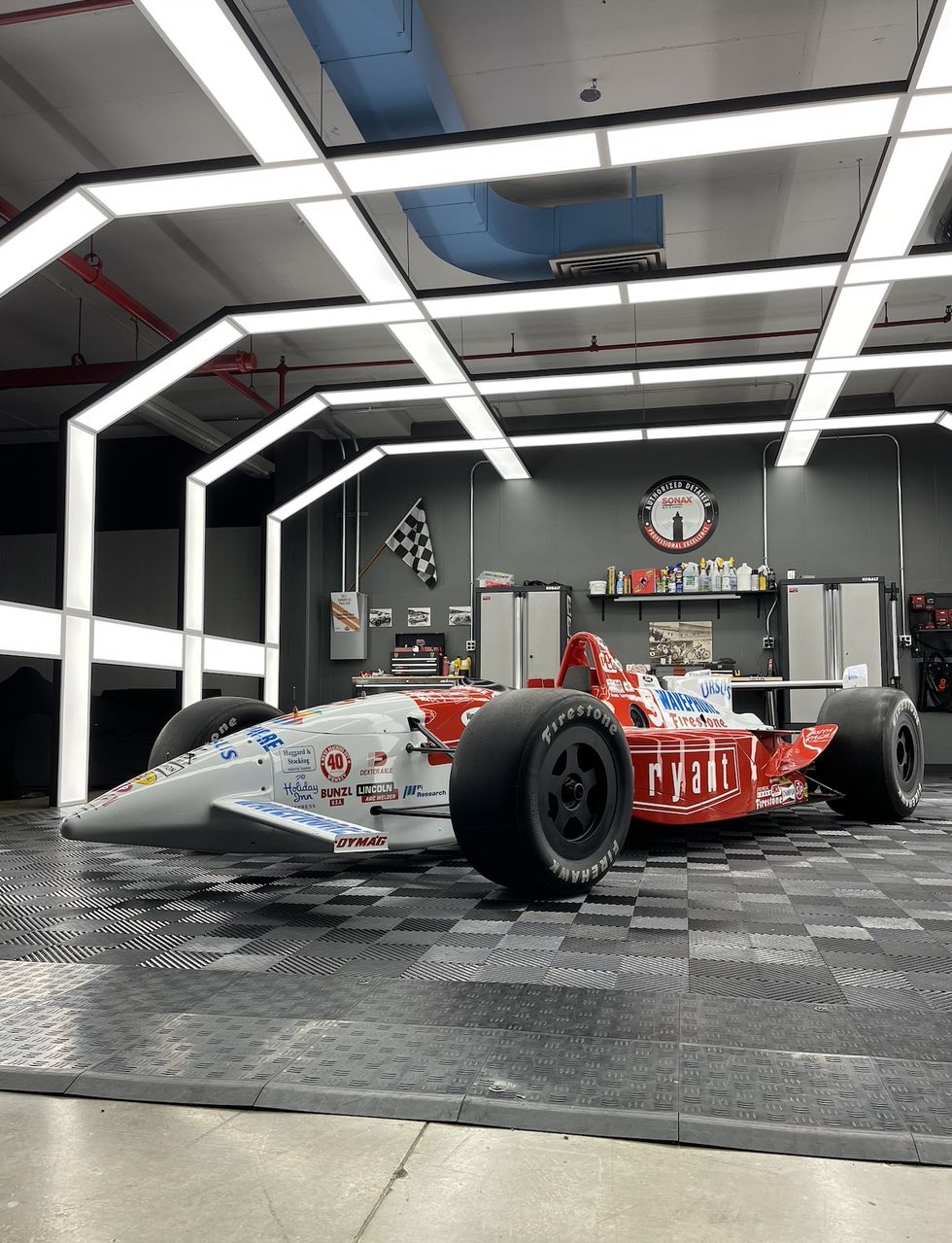- The Indianapolis Motor Speedway Museum has begun relocating its priceless 200-plus collection of antique racing, pace, and historic race cars.
- Also being relocated are more than 55,000 artifacts—those include helmets, trophies and other elements—to several secure off-site storage facilities so that contractors can then begin a full roof-to-basement refurbishing of the IMS Museum.
- The Museum will be entirely closed for the next year-and-a-half. It expects to reopen in April 2025.
One of the most unique motorsports museums in the world has begun an 18-month renovation that promises to take an already world-class experience into one that promises an even greater time for visitors.
The Indianapolis Motor Speedway Museum has begun relocating its priceless 200-plus collection of antique racing, pace, and historic race cars—as well as over 55,000 artifacts that include helmets, trophies and other elements—to several secure off-site storage facilities so that contractors can then begin a full roof-to-basement refurbishing of the Museum.
But the $89 million project comes with an unfortunate bit of news for racing fans who will be coming to IMS over the next 18 months, most notably during its busiest days during the month of May: the Museum will be entirely closed for the next year-and-a-half. It expects to reopen in April 2025, just in time for the traditional Month of May and the 109th Running of the Indianapolis 500.
The first phase of the renovation—meticulously packing up and moving each car from the Museum’s massive 140-car basement onto special haulers and then to several secure storage facilities—is complete for the most part.
The second phase—moving the roughly 60-plus cars and artifacts still currently on display in the Museum’s two levels—will take a few days and begin immediately after the last fan leaves the Museum at closing time on Nov. 6.
Then comes the third and largest phase, the actual tear-down and renovation of the museum’s innards, which begins in earnest.
Once renovation starts, while there will not be any physical expansion of the outside of the building, the finished product will complete a comprehensive state-of-the-art rebuild that should keep the Museum a must-see experience for racing fans for decades to come.
Originally opened in 1956 in a building just outside Turn 1 (which is now the Speedway’s administration and ticket office) with an initial collection of 13 vehicles, the Museum moved to its current 96,000 square-foot facility built within the track’s infield between Turns 1 and 2 in 1976.
The renovation of the 47-year-old building has been in the planning stages for the better part of the last decade, according to Jason Vansickle, the Museum’s vice president for curation and education.
“Really, over the last two and a half years in our current configuration, we’ve been hot and heavy on developing this process, not only from a construction and design process, but also the feasibility and all the kind of what-if aspects that come with doing a project this significant,” Vansickle said.
“So as you see museums kind of progress from a new kind of modern age, interpretive and experience model, the Museum that we have wanted (works) towards that. So this is kind of the next step in the overall process.”
The Museum’s collection and restoration departments have been at the forefront of planning the move. Because of the priceless value of so many historic cars and artifacts, the Museum is obviously not revealing the storage locations the collection will be housed in during the renovation. But security and safety is keen.
“We really spent the last 12 months trying to locate different locations, because of just the size of the collection as a whole,” Vansickle said. “That demands a pretty significant storage space. And then you get into the security aspect and the condition, and all the other kind of aspects that you have to look into.
“It’s not unfortunately like just moving them to a U-Haul or a storage spot, or in that regard, if you’re redoing your garage and you have a two- or four-car collection.
“It’s one of the things that we had to work internally and externally with partners because we do have multiple areas that we are storing these items to fit our parameters.”
The massive movement of the collection is being done in three parts. The first phase, which focused on moving non-vehicle artifacts, took about six weeks and was completed near the end of August.
The second phase – moving the majority of the 140 cars in the Museum’s basement – began afterward and was supposed to take two weeks, but was efficiently completed in roughly 96 hours, allowing crews to begin some preliminary work starting in early October, Vansickle said.
The final and most significant phase of the renovation—removing the roughly 60-70 cars and artifacts currently on display at the Museum—will begin immediately after the Museum’s final day of operation on Nov. 6. Then the real work will commence.
There had been consideration given to keep the Museum open in some form during reconstruction, but it just proved insurmountable from a cost and logistic perspective, Vansickle said.
“At the end of the day, to do the type of construction and the type of reimagination we want to do in the museum, it just wasn’t feasible to kind of piecemeal things together,” he said. “We have things like our systems and HVAC will be down, it’s a complete remodel of our efficiencies, things like that, that also are included in this. So we really just couldn’t piecemeal it.”
For most of the Museum’s 67-year existence, it has taken pride of being open almost every day of the year, with the exception of Thanksgiving and Christmas Day. However, as of Nov. 6, the doors will be closed for the next year-and-a-half.
When doors reopen to fans in spring 2025, they will enjoy an experience that will have made the wait worth it. And even though the building is land-locked, so to speak, project designers have still come up with a way to add a 6,000-square-foot mezzanine above the Winner’s Gallery.
But that’s not the best part.
For the first time in the Museum’s history, the 24,000-square-foot lower level – a.k.a. the “basement” – will be open to the public to see many of the historic cars and artifacts that only occasionally go on display.
“So even though we’re not expanding outside the footprint, we are adding around 30,000 square feet of new display area,” Vansickle said.
While there will not be an addition built onto the existing Museum building, a new external site still to be determined will allow “guests to go to our restoration and storage location and be able to watch our restoration crew work on the vehicles, prep the vehicles and also see the cars that are not on display currently in the museum,” Vansickle said. “We want to let our collection become more public-facing and I think that’s an opportunity down the road to allow for that.”
Follow Autoweek contributor Jerry Bonkowski on X (formerly Twitter) @JerryBonkowski
Read the full article here



